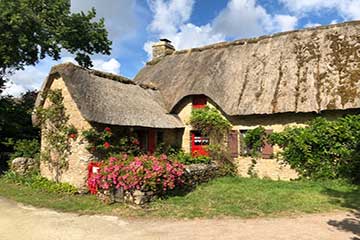Do I need Planning Permission?
Most likely, during your lifetime, you will need to do an extension, alteration to an existing property or maybe you want to change the use of a building or land. So, is important to understand if you need planning permission or not before you start any work (this guide is aimed only to properties in England)
Generally, you will need planning permission for major alterations to existing buildings, to change the use of buildings or if you plan eracting new buildings. Also, is your responsability as land/property owner to seek out the necessary approvals, permissios or certificates required by law.
Are situations when certain alterations or constructions can be done under permitted development. However, is really important that you get the planning guidelines right to avoid any costly mistakes. Also, to note, apart from planning permission, you also need to be aware of building regulations.
For a better understanding, we can summarise planning permission as IF you can build or make changes to a property or land, while building regulations is about the STANDARD/QUALITY of what you are building to ensure your safety.
In planning permission terms, conservatories came under same category as single storey extensions (of course the building regulations vary). A conservatory can be built under permitted development outline if certain conditions are met.
For anything not within these limits, you will need planning permission for your conservatory. Keep in mind that building regulation approval is required for any work.
To make sure you do not need planning permission for your conservatory, you need to adhere to the following rules:
- Less than 50% of the land around the “original footprint” is covered (include any outbuildings)
- The extension is not forward of the front or side of the original house that faces onto a road
- The conservatory height is lower than the highest point of the roof
- The conservatory eaves and ridge height is lower than the existing house
- The conservatory eaves height is less than 3m, if within 2m of boundary
- The conservatory needs to be under 4m height and can not extend by more than 6m (on a semi) or 8m (on a detached house)
- A conservatory built to the side cannot be wider than 50% of the size of the original house
Caveat: You may need permission if you live in a conservation area or fall under Article 4 Direction; if is a listed building, you will definetly require a Listed Building Consent. Also, if the construction is between 4 to 8 m you should consider the neighbour consultation scheme and contact your local planning office.
How close can you build a conservatory to a boundary?
As long the conservatory is less than 3 metres high, it can go to the edge of the boundary at the side and the back of the property (if does not cover more than 50% of the area around the house).
You should be aware that if any excavation or eraction goes near or on a boundary, the Party Wall Act 1996 will apply – in addition to the planning and building regulations.
This article will cover:
- Do you need Planning Permission for a Conservatory?
- Do you need Planning Permission for a Porch?
- Do you need Planning Permission for a Loft Conversion?
- Do you need Planning Permission for an Extension?
- Do you need Planning Permission for a Garage Conversion?
- Do you need Planning Permission for a Shed?
- Do you need Planning Permission for a Summer House?
- How much does Planning Permission cost?
- How long does Planning Permission last?
Need A Free Estimate?
- Fully qualified RICS professional surveyor
- Affordable, fast and thorough surveys
- Clear, precise and easy to understand report
Porches are normally built at the front of the property, and as from planning perspective, are somewhere between an extension and a conservatory. If certain rules are considered, a porch would not require planning permission.
To make sure you do not need planning permission for your porch, you need to adhere to the following conditions:
- Porch footprint is less than 3sqm (including the wall thichness)
- The highest point is less than 3m in height
- If is not within 2m of a boundary and the road
Is safe to mention this again, but if you live in a listed building, in a Conservation Area, Area of Outstanding Natury Beauty or Natoonal Park, you will need a Listed Building Constent, respectively a planning permission for a loft conversion (actually for any kind of alteration or additional construction).
To make sure you do not need planning permission for your loft conversion, you need to consider the following conditions:
- The extended space does not go beyond the plane of the existing roof slop facing the highway
- The new roofing does not add more than 40m3 of space (on a teraced) and 50m3 (on a semi) – any previous roof extensions will be count towards this allowance
- No extension is higher than the higher point of the existing roof
- No raised balconies or platform are allowed
- The new roof material needs to match the existing one, or really similar to the original
- Side facing windows feature obscure glazing and an opening that is 1.7m above the floor
- Dormers or any other extensions are set back to at least 20cm from the original eaves
As it was said at the beginning of this guide, a conservatory and an extension, from planning terms, are really similar. And of course, if you are in a listed building, designated are or in a property that falls under Article 4 Direction you will need a Listed Building Consent, respectively planning permission for building an extension.
To make sure you do not need planning permission for your extension, you need to consider the following conditions:
FOR A SINGLE-STOREY EXTENSION
- The single-storey extension footprint needs to be less than half the land around the original house (keep in mind any other outbuildings)
- The single-storey extension is not forward of the front or side of the building that faces onto a road
- Materials are similar to those from the existing buildings
- The single-storey extension is not higher than the highest point of the roof
- The single-storey extension eaves are less than 3m in height if is within 2 metres of the boundary
- The single-storey extension eaves and ridge are not higher than the existing property
- If the extension is placed on rear elevation, should not be higher than 4m or to extend more than 6m (on semi) or 8m (on detached house)
- No addition of verands, balconies or raised platforms
- Wider than half the width of the existing house
FOR A DOUBLE-STOREY EXTENSION (can be built only on rear elevation without planning permission)
- Extension footpring needs to be less than half the land around the existing building
- Materials are similar to those from the original house
- The double-storey extension is not higher than the highest point of the roof
- The double-storey extension eaves and ridge are not higher than the existing property
- Extends beyond the rear of the original house by over 3m or is within 7m of boundary opposite rear wall
- Roof pitch needs to match existing house
If the construction has more than 4m from the back of your home, you have the duty to inform your neighbour – neighbour consulation scheme, which has the purpose to minimise disputes between neighbours when comes to bigger developments.
Need A Free Estimate?
- Fully qualified RICS professional surveyor
- Affordable, fast and thorough surveys
- Clear, precise and easy to understand report
The short answer would be no. Normally, you do not need a planning permission for a garage conversion because the required work is internally and does not involve an extension or major alteration to the exterior fabric of the building.
However, you should consult your local planning authority because are cases when the permitted development rights have been removed by a condition. This is often the case on housing estates or new builds.
Where work is proposed to a listed building you will need a Listed Building Consent. Keep in mind that building regulations needs to be considered as the space you convert needs to be habitable.
As with previous scenarios, are some considerations you need to take into account, in order to to make sure your new shed is built under permitted development criteria:
- Normally, sheds are single storey and should not be heigher than 2.5m
- The shed footpring should not cover more than 50% of the garden, not including the house itself
- The shed can not be erected on front elevation, and can not have a veranda or balcony. For example, if the shed will be built on a raised platform, such as decking, it can not exceed the height of 30cm from ground level
- The purpose of the shed should be just to domestic activities, by the owner of the property and can no purposed as sleeping accommodation
- In the case of designated land, Areas of Outstanding Beauty and similar sites, any shed or similar structure over 20 metres away from main dwelling cannot have more than 10sqm.
Similar to most of previous scenarios, you do not need planning permission for a summer house or a garden room under certain circumstances.
To make sure you do not need planning permission for your garden room or summer house, you need to consider the following conditions:
- Less than 50% of the land around the “original footprint” is covered (include any outbuildings)
- The summer house/garden room is not forward of the front or side of the original house that faces onto a road
- The eaves height is less than 2.5m, if within 2m of boundary
- The summer house/garden room can not have over 3m with a pent roof or 4m with an apex roof and should be used only in domestic purposes
The type of planning permission and the fees of applying for it, depends on what plans you have for your house or plot. You can have different type of planning applications fees, for example for alterations/extension on a single dwelling house or flat it will cost you £206; for a new dwelling house it will cost you £462.
In the case you need planning permission for your alteration or extension, generally, unless otherwise stated by the planning authority on your planning permission notice, you will have 3 years from the date of planning permission being granted to start the development.
We hope that our “Do you need planning application” guide will help you evaluate if your plans will require planning approval or you can build it under permitted development act.
We highly recommend to do your research thoroughly before you start any work, especially when comes to needing building regulations certification. If you are in doubt, contact your local planning authority or a chartered professional.
Written by Danil P.
23rd Oct 2021 (Last updated on 5th Mar 2023)
10 minute read





